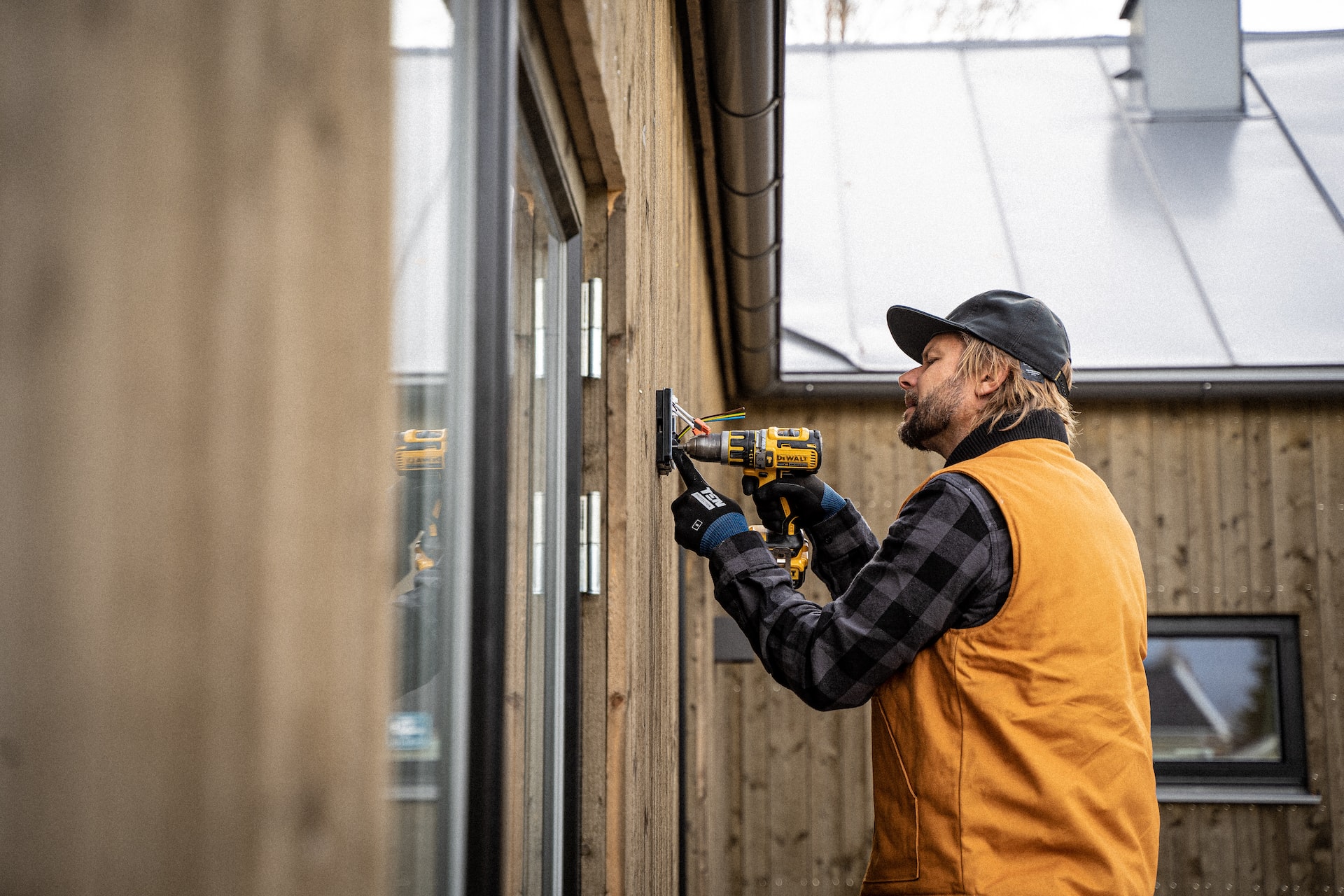Lifestyle
15 Wedding Trends in 2024 That Every Couple Should Know About in London

Staying up-to-date with the latest wedding trends is important. If you’re working in the wedding world, like planning or photography, knowing these trends helps you give couples what they’re looking for. For people planning their wedding, being aware of trends can help make their big day feel special and unique to them.
It also helps with planning, like figuring out where to spend the budget. Plus, in a world where lots of wedding photos get shared on social media, having a trendy wedding can make those photos extra special. Whether you’re a pro or planning your wedding, keeping up with trends can make the day more successful and memorable.
15 Massive Wedding Trends You Look for in 2024

1. Eco-Friendly and Sustainable Weddings
London’s commitment to sustainability is mirrored in its wedding trends. Couples are increasingly choosing eco-friendly options like venues that practice green initiatives, decorations made from recycled or biodegradable materials, and menus featuring locally sourced, organic foods. Rooftop gardens and city parks serve as popular backdrops, combining urban sophistication with a love for nature.
2. Micro-weddings and Intimate Gatherings
In London, where intimate spaces are cherished, micro-weddings are gaining popularity. These smaller celebrations, often hosted in boutique hotels, quaint eateries, or historical landmarks, allow for a more personalized and detailed experience. Such gatherings emphasize quality interactions with each guest and provide a cozy, exclusive atmosphere reflective of London’s eclectic and intimate venues.
3. Technology Integration
Leveraging London’s technological landscape, modern weddings incorporate advanced solutions for convenience and inclusivity. Digital planning tools, live-streaming services, and social media integrations are increasingly common. This trend caters to London’s diverse and often international community, allowing friends and family from afar to partake in celebrations virtually, bridging distances with technological connection.
4. Diverse and Cultural Celebrations
Reflecting the multicultural fabric of London, weddings are increasingly embracing a mix of cultural traditions. Fusion weddings that combine different religious or cultural ceremonies are common, showcasing the city’s diversity. From the cuisine to the attire, these weddings blend traditions from around the world, exemplifying London’s status as a melting pot of cultures.
5. Unique and Non-Traditional Venues
London’s rich history and contemporary spirit offer a variety of unconventional wedding venues. Couples are drawn to unique spaces like art galleries, historic buildings, or modern rooftops that provide a distinct character and story. These venues are not just places to host a wedding; they are backdrops that reflect the couple’s individuality and London’s diverse architectural landscape.
6. Personalization and Storytelling
Personal touches are at the heart of London weddings. Couples are increasingly seeking to tell their unique stories through custom details – from specially crafted wedding bands by local jewelers to bespoke cocktail menus featuring favorite drinks. These personalizations aren’t just decorative; they narrate the couple’s journey, making each wedding distinctively their own.

7. Bold Color Schemes and Floral Arrangements
London’s wedding scene is embracing vibrant and bold color palettes, moving away from traditional pastels. This trend is visible in everything from floral arrangements featuring exotic, brightly-hued flowers to strikingly colored bridesmaid dresses. These colorful choices reflect London’s eclectic and trend-setting fashion sense, adding visual excitement and personality to weddings.
8. Interactive and Experiential Elements
London weddings are increasingly focusing on guest experience, incorporating interactive elements that entertain and engage. Photo booths, live artists, and custom cocktail bars are popular, reflecting the city’s dynamic entertainment scene. These features not only provide fun for guests but also create unique, memorable experiences that resonate with London’s vibrant and lively character.
9. Focus on Local and Artisanal Suppliers
Emphasizing community support and quality, London weddings are increasingly featuring local, artisanal suppliers. This trend includes locally sourced food, handmade decor, and entertainment from London-based artists. Such choices not only personalize the wedding experience but also reflect a commitment to supporting local businesses, showcasing the best of what the city has to offer.
10. Vintage and Retro Themes
London’s rich history is a treasure trove for vintage and retro-themed weddings. Whether it’s a celebration inspired by the Victorian era or the swinging 60s, the city’s architectural and fashion legacy provides an authentic backdrop. These weddings are more than a nod to the past; they’re a creative blend of historical elegance and modern sensibility.
11. Wedding Wellness and Self-Care
In tune with the growing focus on well-being, London weddings are incorporating wellness elements like pre-wedding yoga sessions, spa days, or health-conscious menus. This trend reflects a broader shift towards mindfulness and self-care, ensuring that couples and their guests feel rejuvenated and relaxed, in contrast to the often hectic pace of city life.
12. Innovative Catering Options
London’s culinary diversity is spilling over into its wedding scene, with innovative catering options becoming a highlight. Gourmet food trucks, tasting menus from celebrated local chefs, and globally inspired cuisine are popular choices. These catering trends not only add a gastronomic flair to weddings but also reflect the city’s status as a culinary capital.
13. Bespoke Entertainment
Tailored entertainment in London weddings showcases the city’s rich cultural scene. Couples are choosing local indie bands, performances by West End actors, or unique acts like spoken word artists. This not only provides a distinct entertainment experience but also reflects the couple’s tastes, celebrating London’s diverse artistic talent.
14. Elegant Minimalism
In a city known for its understated style, elegant minimalism is a significant trend in London weddings. This approach focuses on simplicity and sophistication, with clean lines and monochromatic color schemes. The decor is carefully curated to create an atmosphere of refined elegance, mirroring the chic and polished aesthetic that London is famous for.
15. Sustainable Transportation
Eco-friendly transportation options for weddings are increasingly popular in London. This includes the use of electric or hybrid vehicles, vintage buses for guest transport, and even bicycles for a quaint, eco-conscious touch. These choices are not just environmentally responsible but also add an element of London’s unique charm and character to the wedding festivities.
Conclusion
Looking ahead to 2024, these 15 wedding trends encapsulate the essence of modern celebrations. From intimate, personalized experiences to sustainable choices and vibrant cultural expressions, they showcase a dynamic blend of tradition and innovation.
Embracing these trends will lead to memorable, meaningful, and uniquely tailored wedding experiences, reflecting the evolving landscape of love and commitment.

Home Decor
Keep the Heat On: Why November Is the Smartest Month for Boiler and Heating Checks
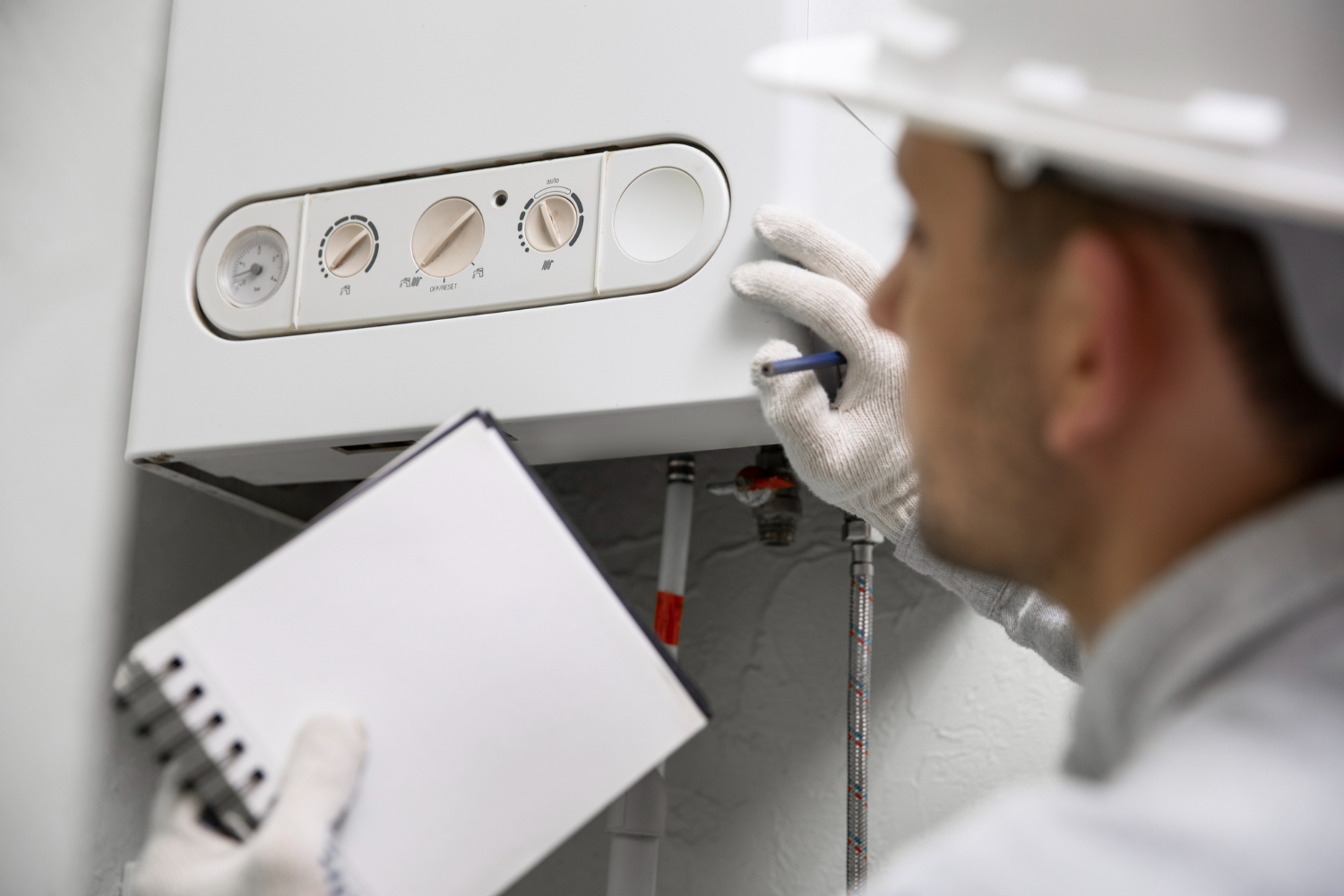
As the nights draw in and the temperature drops, it’s officially boiler season. November is when many households across the UK switch their heating back on for the first time in months and realise something’s not quite right. Maybe the radiators are slow to heat up, the water’s lukewarm, or the boiler makes a strange noise.
That’s exactly why November is the best time to arrange a boiler service and make sure your heating and hot water system is ready for winter. A quick check now can prevent breakdowns, improve efficiency, and keep your home warm when you need it most.
Why November Is the Perfect Month to Book
1. The Weather’s Cool but Not Freezing Yet
November sits in that ideal middle ground between mild autumn and freezing winter. Engineers tend to be easier to book, and you can have your system checked before demand peaks. Once December hits, call-outs start to surge, and getting an appointment can take longer. Taking care of it now means you’ll be prepared for the colder weather ahead.
2. Catch Problems Early
During summer, your boiler spends months barely ticking over, providing only hot water. That downtime might seem harmless, but it can allow parts to seize or minor faults to develop unnoticed. When the heating finally comes back on, those little issues often turn into sudden faults.
A check in November helps to identify problems like low pressure, sticky valves, or weak pumps before they cause bigger headaches. It’s the perfect time to give your boiler a quick health check so it can run reliably all winter.
3. Improve Efficiency and Lower Energy Bills
An efficient heating system can make a noticeable difference to your energy costs. When a boiler is properly maintained, it doesn’t need to work as hard to reach the same temperature, which means it uses less gas. During a routine visit, the engineer will test performance, clean the internal parts, and make sure everything’s running as efficiently as possible.
Even simple adjustments, like balancing radiators or topping up pressure, can help your heating work faster and more evenly. A well-maintained system also produces less wear on parts, reducing the chance of breakdowns later in the season.
4. Keep Your Home and Family Safe
A yearly check isn’t just about comfort, it’s also about safety. Boilers that haven’t been serviced in a while can become a hidden hazard, particularly if the flue, seals, or ventilation aren’t working as they should. A trained engineer will inspect these areas carefully and test for carbon monoxide leaks.
Carbon monoxide is invisible and odourless, so prevention is key. Making sure your system is running safely gives peace of mind that your home is protected all winter.
5. Keep Your Warranty and Insurance Valid
It’s easy to forget that most boiler warranties depend on regular servicing. If you skip a year, your cover could lapse without you realising. The same is true for many home insurance policies, which often expect proof of maintenance. Booking your annual service in November helps you stay on top of both, so you’re not caught out if something does go wrong later.
Keeping a simple service record is a smart habit that protects both your warranty and your wallet.
What’s Included in a Professional Check
If you’ve never seen what happens during a boiler inspection, it’s simpler than you might think. A professional engineer will:
- Inspect the boiler and surrounding pipework for leaks or corrosion
- Check the flue to make sure it’s safely removing waste gases
- Clean the burner, heat exchanger and ignition components
- Test safety controls and carbon monoxide levels
- Confirm the correct gas pressure and overall performance
The whole process usually takes under an hour, but it can make a big difference to the way your system performs throughout winter.
Simple Checks You Can Do Yourself
You don’t need to wait for an engineer to do a few quick checks around the house:
- Look at the pressure gauge; it should read between 1 and 1.5 bar when cold, or within the green zone if your boiler uses colour indicators.
- Bleed radiators if they have cold spots to remove trapped air
- Turn your heating on for a short while to make sure everything is working smoothly
- Check for any leaks or damp patches around visible pipework
- Listen for any rattling or whistling noises that might indicate trapped air or sludge
These small steps can keep your system running efficiently and help you spot potential issues early. If something seems unusual, note it down and mention it when you book your boiler service.
Why an Annual Check Makes Sense
Booking a service each year has long-term benefits. It helps you avoid the inconvenience of a sudden breakdown, but it also improves overall system performance. Regular maintenance keeps parts moving freely, improves safety checks, and ensures your boiler runs efficiently, which can lower energy consumption over time.
A well-looked-after system can last several years longer than one that’s neglected. It’s also better for the environment, as efficient heating uses less energy and reduces emissions.
Don’t Wait for the Cold Snap
It’s easy to delay a boiler check until something stops working, but by then you’ll be competing with everyone else for appointments. November gives you the chance to stay ahead, book a convenient time, and make sure your heating system is fully ready for winter.
A short visit from a qualified engineer now means no unexpected cold mornings, no last-minute panic, and a warm, comfortable home for the months ahead. It’s a small job that makes a big difference to how your home feels.
Lifestyle
Becoming a wedding planner: a practical guide
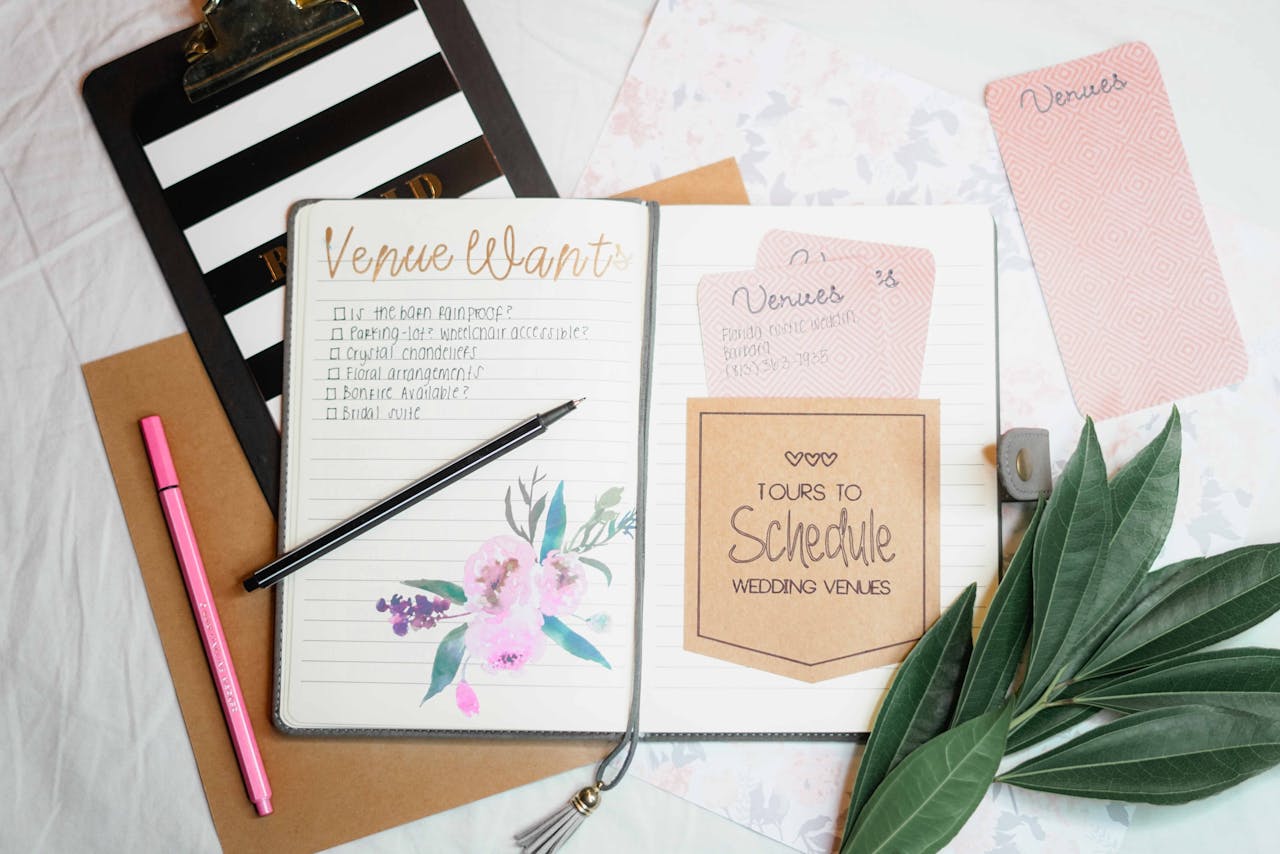
Why is the role of the wedding planner increasingly in demand?
Planning a wedding means managing a complex project that involves timelines, budgets, contracts, suppliers, logistics, and a strong emotional component. Couples who want a seamless, personalised, and stress-free celebration are increasingly turning to professionals who can oversee the entire process. The growing demand for customisation, the rise of themed weddings, the logistics of accommodating travelling guests, and the widespread use of digital tools have all contributed to making the wedding planner a key figure in today’s wedding industry.
What a wedding planner does: scope and responsibilities
The wedding planner acts as both director and designer of the wedding event. They turn ideas and constraints into an actionable plan, monitor quality, and handle unexpected issues. Their work includes consulting, operations, and on-site supervision.
Initial analysis and concept development
Every project starts with listening: desired style, level of formality, budget, guest count, accessibility needs, and symbolic or family elements to incorporate. From this, a concept is born that shapes all aesthetic and organisational decisions.
Planning and operational timeline
Once the creative direction is defined, the wedding planner structures a detailed timeline: booking deadlines, budget reviews, menu tastings, invitations, guest RSVPs, technical setups, and ceremony rehearsals. This timeline becomes the project’s control panel.
Supplier search, selection, and management
Venue, catering, floral designer, photographer, videographer, music, lighting, coordinated stationery, transport, hospitality. The planner assesses each supplier’s reputation, budget compatibility, availability, and style. They negotiate quotes, clarify contractual duties, and maintain direct communication with all parties. For this very reason, some businesses have positioned themselves to offer services for couples living in different countries or wishing to get married far from home, providing multilingual support, remote planning, and logistical coordination. Here’s an example of the services offered by a wedding planner based in Italy who specialises in international weddings and works with British couples.
Budget management and resource allocation
The initial budget is divided into categories, with estimated costs compared against actual quotes. A good planner proposes smart alternatives if there are overruns and helps the couple identify where to invest for the best impact.
Problem-solving and contingency planning
Zero risk doesn’t exist. Weather conditions, delays, missing deliveries, and last-minute changes to guests or menus require quick decision-making. Experienced planners prepare backup plans, maintain up-to-date contacts, and work with detailed checklists.
Event-day coordination
On the big day, the planner orchestrates timings, suppliers, and transitions: guest arrivals, final setups, couple’s entrance, meal service, speeches, cake cutting, and entertainment. Their goal is to make the behind-the-scenes complexity invisible to the guests.
Key skills for becoming a wedding planner
Being a wedding planner demands a mix of technical, managerial, and interpersonal skills. Aspiring professionals should develop strengths in:
- Planning and managing complex projects
- Organising schedules, vendors, and documents
- Clear, empathetic, and solution-focused communication
- Applied aesthetics: colour palettes, materials, lighting, visual consistency
- Interpreting and comparing quotes
- Negotiation and contract management
- Budget control
- Stress management and fast decision-making in critical situations
- Digital tools: spreadsheets, project management software, CRM, cloud platforms, social and content marketing
- Teamwork in multidisciplinary environments
Getting started: training, experience, and credibility
There is no universal professional register for wedding planners, so your journey depends on your goals, available resources, and target market.
Foundational training
A solid introductory course in wedding planning or event management offers structure: project phases, supplier relations, contract basics, event aesthetics, and client communication. Choose programmes that include hands-on exercises, budget simulations, and real-world case studies.
Advanced training and specialisations
You can deepen your expertise with modules in floral design, event food & beverage, lighting and audio management, ceremonial protocol, accessibility and inclusion, marketing for freelancers, and pricing strategies.
Certifications and accreditations
Although not mandatory, certifications from recognised events or hospitality bodies can boost credibility, especially at the start when you lack a portfolio. Always check the provider’s reputation, teaching hours, practical experience, and certificate value with agencies or clients.
On-the-job experience
Shadowing an experienced planner is still the most effective way to learn. Offer your help as a seasonal assistant by supporting site visits, timeline revisions, setups, supplier coordination, and day-of operations. Even roles in venues, catering, or event production can provide transferable skills.
Portfolio and reputation
Document every experience with authorised photos, role descriptions, and summaries of managed budgets or challenges faced. Collect testimonials from clients and suppliers. Prepare a short, polished PDF or slide deck to send to potential clients.
Running it like a business
Wedding planners aren’t just event technicians: they’re service professionals offering paid consultancy. An entrepreneurial mindset is essential.
Define your business model: fixed fee, percentage-based fees on the budget, modular packages, or hourly consultation
Establish processes: client onboarding, initial questionnaires, shared timeline tools, payment policies
Track key metrics: qualified leads, conversion rates, average budget, profit margins
Build a strong online presence: professional website, updated portfolio, engaging social channels, valuable content (guides, tips, short videos, etc.)
Protect your business: use clear contracts and keep documentation organised
Ongoing learning and emerging trends
The wedding industry evolves quickly. Aesthetic trends, digital tools, sustainability expectations, and hybrid formats (in-person + online) are changing the way planners work. Staying up to date is part of the job. Attend workshops, trade fairs, technical webinars, and join professional communities. Explore tools for shared timelines, cloud-based document management, live-streaming platforms, 3D space layout, and environmental impact tracking. The ability to learn, adapt, and communicate your value over time is what separates professionals with stable careers from occasional planners.
Home Decor
How to Choose Strata Painting Services in London
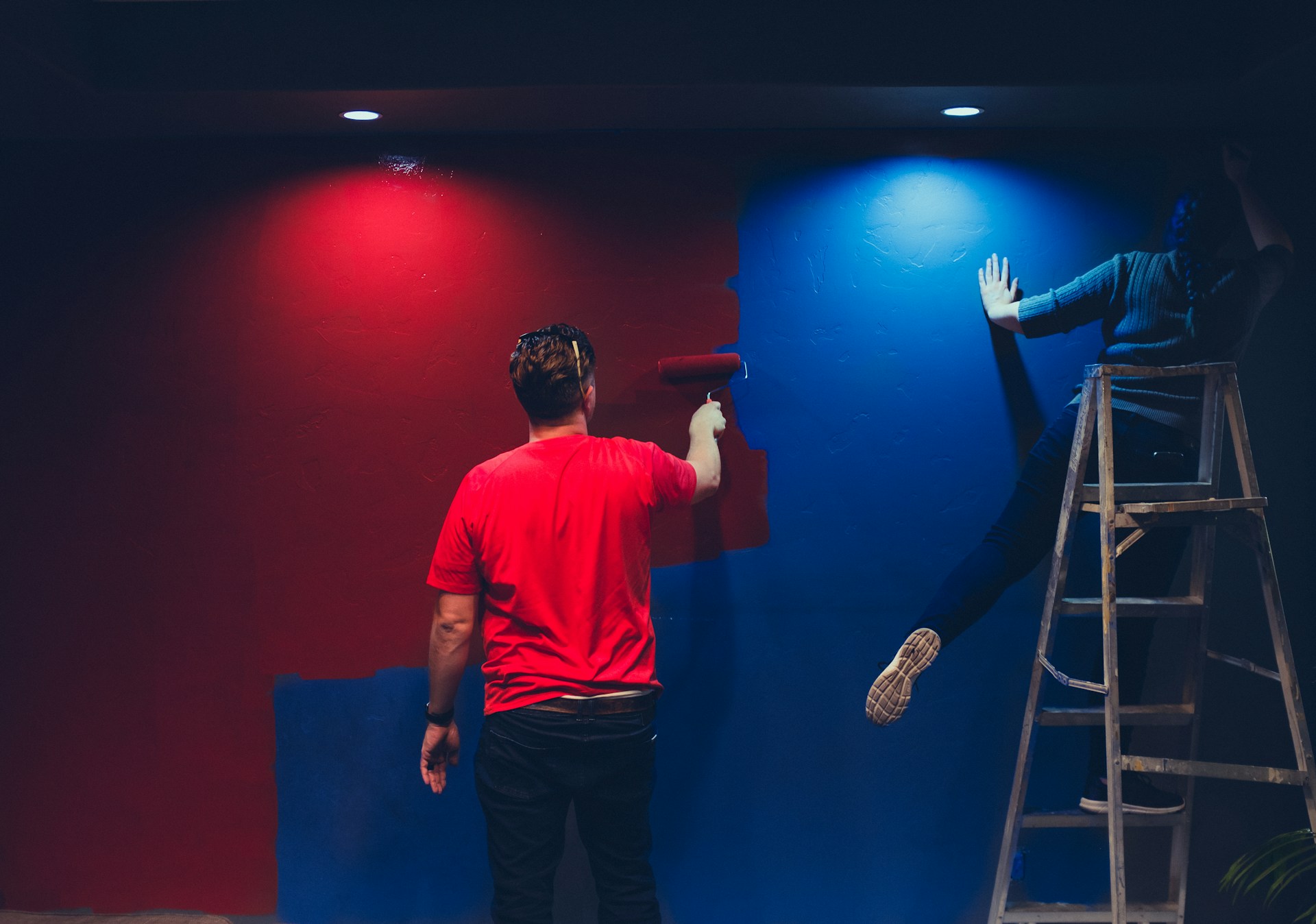
London is home to countless high-rise apartments, office complexes, and historic buildings, all requiring regular upkeep to maintain their charm and durability. One crucial aspect of property maintenance is strata painting, which ensures interior and exterior shared spaces remain visually appealing and well-protected.
Unlike standard painting jobs, strata painting involves special coatings, weatherproofing, and compliance with strict safety regulations to meet the needs of multi-unit buildings.
With London’s frequent rainfall, pollution, and varying architectural styles, choosing a reliable strata painting service isn’t just about aesthetics—it’s about long-term protection and value preservation.
Whether it’s a modern glass-covered skyscraper in Canary Wharf or a centuries-old residential complex in Kensington, the right painting professionals can help enhance curb appeal while ensuring structural integrity.
What Does Mean By Strata Painting?

Strata Painting is a specialized painting service designed for multi-unit properties like apartment buildings, townhouses, and commercial complexes. It ensures that shared areas such as hallways, staircases, lobbies, and exteriors are well-maintained and protected against weather damage.
For instance, in central London, high-rise buildings often require weatherproof coatings to withstand frequent rain and pollution. In contrast, heritage buildings in Westminster may need specialized paints to preserve their original look while complying with heritage protection laws. This makes strata painting essential for maintaining property aesthetics, longevity, and value.
Key Factors of Choosing Strata Painting Services in London

1. Use of Drones for Building Inspections Before Painting
Drones have revolutionized building inspections by providing aerial views of high-rise strata properties, allowing for detailed assessments of structural damage, peeling paint, and moisture penetration. This reduces the need for scaffolding-based manual inspections, cutting costs and improving safety. According to a 2023 study, over 40% of London’s property management firms have integrated drone inspections for maintenance planning, proving its growing popularity in the industry.
2. Use of Biodegradable and Non-Toxic Paints
With stricter UK environmental regulations, London-based strata painting companies are shifting towards biodegradable, non-toxic, and low-VOC (Volatile Organic Compound) paints. These eco-friendly options improve indoor air quality while minimizing harmful chemical emissions. Reports indicate that over 60% of newly developed residential buildings in London now use low-VOC paints to meet sustainability standards.
3. Green Certifications for Environmentally Responsible Contractors
Many strata painting contractors in London seek BREEAM (Building Research Establishment Environmental Assessment Method) and LEED (Leadership in Energy and Environmental Design) certifications to showcase their commitment to sustainability. Buildings with BREEAM-certified painting solutions have been shown to reduce energy consumption by up to 25% annually, making them an attractive option for property developers and management companies.
4. Self-Cleaning and Heat-Reflective Coatings
With London’s variable climate, self-cleaning coatings have gained traction due to their ability to reduce dirt accumulation and grime buildup on painted surfaces. These coatings, often made with titanium dioxide-based formulas, break down organic dirt through photocatalysis. Similarly, heat-reflective coatings help reduce indoor cooling costs in London’s commercial buildings by reflecting UV rays. Studies indicate that heat-reflective paints can lower interior temperatures by up to 5°C, cutting energy expenses by 15-20% annually.
5. 3D Visualization Tools for Previewing Color Schemes
Choosing the right color scheme is a crucial decision in strata painting. 3D visualization tools allow property owners, managers, and residents to preview multiple color options and finish in real-time before painting begins. These tools, widely used by top painting contractors in London, help reduce color mismatches, improve client satisfaction, and streamline the decision-making process.
6. Automated Painting Equipment
Automation is transforming the strata painting industry by improving efficiency, safety, and consistency. High-rise buildings in London are increasingly adopting robotic painting systems that use precision-controlled spray mechanisms to coat large surfaces evenly. These systems reduce labor costs by up to 30% and enhance safety by minimizing human exposure to hazardous heights and harsh weather conditions.
7. Integration of Solar-Reflective Coatings to Reduce Energy Consumption
Solar-reflective coatings are gaining popularity in London’s high-rise and commercial strata projects. These coatings are designed to reflect UV radiation, preventing excessive heat absorption and reducing the reliance on air conditioning. Studies suggest that buildings treated with solar-reflective coatings can cut cooling costs by up to 20%, particularly in densely populated areas like Canary Wharf and Central London.
8. Smart Coatings with Antimicrobial Properties
Post-pandemic hygiene concerns have led to the widespread adoption of antimicrobial coatings in London’s residential and commercial strata properties. These advanced coatings inhibit bacterial and mold growth, making hallways, lobbies, and shared areas more hygienic. Popular in hospitals and commercial offices, these coatings are now being used in luxury residential complexes to improve indoor air quality and overall sanitation.
9. Water-Based Paints Instead of Oil-Based Solutions
Switching to water-based paints has significantly reduced pollution and carbon footprints in London’s painting industry. These paints dry faster, emit fewer chemicals, and are easier to clean up, making them a preferred choice for strata projects aiming to comply with environmental regulations. Data from the UK Green Building Council (UKGBC) indicates that over 70% of professional painting projects in London now use water-based coatings, marking a shift towards greener practices.
10. Recycling and Waste Reduction Initiatives
Many strata painting contractors now offer paint can recycling programs and waste reduction initiatives. Several London-based firms partner with recycling facilities to repurpose leftover paint, reducing landfill waste and promoting sustainability. This trend aligns with the UK government’s 2030 sustainability goals, pushing more companies to embrace eco-conscious disposal practices.
11. Automated Painting Equipment
Automation is transforming the strata painting industry by improving efficiency, safety, and consistency. High-rise buildings in London are increasingly adopting robotic painting systems that use precision-controlled spray mechanisms to coat large surfaces evenly. These systems reduce labor costs by up to 30% and enhance safety by minimizing human exposure to hazardous heights and harsh weather conditions.
Common Challenges for Strata Painters in London
- Weather conditions: London’s high humidity and frequent rain require special coatings. Unpredictable weather patterns can delay painting schedules and increase drying time, making it essential to choose weather-resistant paints.
- Regulatory compliance: Following UK Work at Height Regulations 2005 and health and safety laws is mandatory. Additional permits may be required for buildings located in heritage areas or conservation zones.
- Minimal disruption: Painters must work efficiently around residents and businesses. This means planning schedules to avoid peak hours, working in phases, and using quick-drying, low-odor paints to reduce inconvenience.
- Access restrictions: High-rise and multi-story buildings require specialized access techniques such as rope access, scaffolding, or hydraulic lifts. Ensuring compliance with safety regulations is critical for worker safety.
- Specialized Coatings and Compliance: Buildings in London may require fire-retardant coatings, anti-mold treatments, or UV-resistant paints to comply with building safety and environmental standards.
- Surface Preparations: Addressing existing cracks, leaks, or damaged surfaces before painting begins is vital for long-lasting results. This may involve power washing, applying primers, and fixing structural defects.
- Tenant Communication: Informing tenants about timelines and expected disruptions is key to maintaining a positive relationship. Property managers must provide clear notices regarding paint odors, restricted access areas, and safety precautions to ensure cooperation.
- Logistics and Scheduling: Coordinating painting schedules with property managers and tenants is crucial to prevent delays. Large-scale projects require meticulous project management to allocate labor and resources effectively.
- Budget Constraints: Strata painting projects often operate on tight budgets. Proper cost estimation, avoiding hidden fees, and choosing cost-effective yet durable paint solutions can help balance quality and affordability.
-

 Business3 years ago
Business3 years agoThe Most Efficient Ways To Use The Best 6 Business Keynote Presentations
-
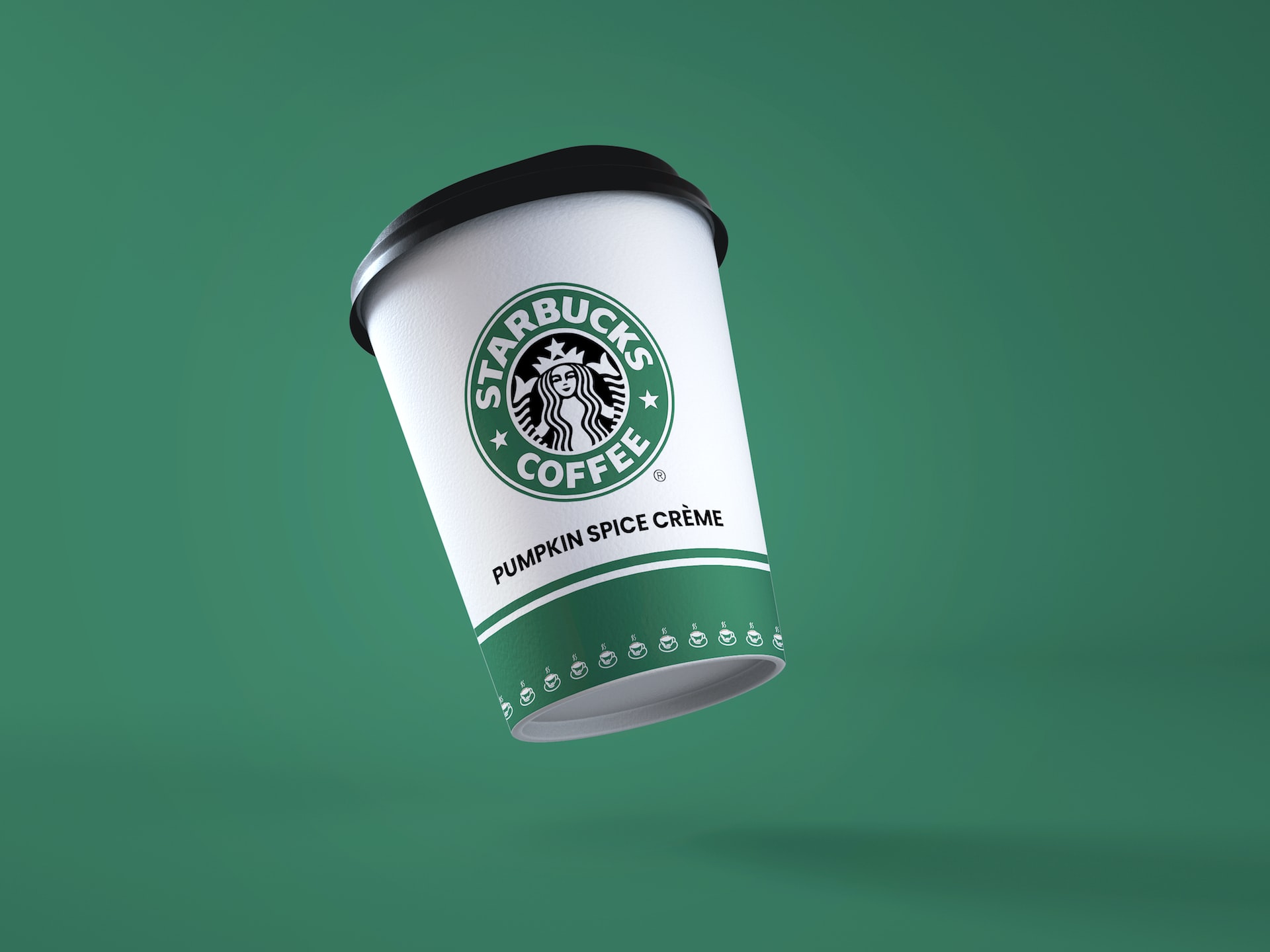
 Apps and Software12 months ago
Apps and Software12 months agoStarbucks Partner Hours App Login Guide
-

 Entertainment12 months ago
Entertainment12 months ago15 Best IPTV Service Providers in the UK 2025
-

 Tech3 years ago
Tech3 years agoIs Forecasting A Part Of Data Science?
-

 Economy4 years ago
Economy4 years agoWhat does it mean to Dream About Pennies?
-

 Entertainment12 months ago
Entertainment12 months ago10 Best Free Video Player Apps For Apple TV
-

 Entertainment3 years ago
Entertainment3 years agoHow To Enhance Your Viewing with Video Subtitle Support
-

 Food & Drinks1 year ago
Food & Drinks1 year agoTop 20 Low-Calorie Healthiest Biscuits and Cookies for Weight Loss in 2025



















